Years later I took another oils course. This time the professor took us step by step
through the creation of a particular type of still life. Every class he would be over my shoulder telling me exactly what to do next. At semester’s end I had a painting that amazed even me, but I had no real idea how I had done it and could not have repeated the techniques. Thinking on these two unsuccessful experiences--where, in my teaching of young children, was the sweet spot of instruction without micromanaging? Primary age students are often unaware that certain tools, materials and techniques even exist. For that reason I offered brief introductions in each weekly class, and required all students to watch and listen. After four minutes, they would begin to vibrate and become restless as they prepared to go to their centers for independent work. For this reason my whole group stand ups were usually five minutes long. At the end of the demo I would invite interested students to stay with me to hear and see more, while they interacted with the new material or technique. Students who were engaged with this had the opportunity to continue with it as long as they wished. The outcome of this was an increased skill and resulting comfort with the medium, often far above what might be considered “grade level”. As a choice teacher with very limited time with my young students, I had to think hard about how skills should be presented. Some of them were what John Crowe of Mass Art calls “I do it, you do it.” This might involve how to thread a needle, or what materials were to be set up before painting. There was no choice in these matters! A more open ended example of skill development took place when brayers and block print ink were offered as one type of monoprint. Students had the chance to experiment with various amounts of ink, and several ways of lifting the color from the plate to their paper. As they worked we could comment on the sound that the brayer was making, as well as process how well their print came out and why. The skills involved in inking a plate were then in place before block prints were introduced. Arranging the demos in that order resulted in vastly improved success with the more complicated block printing. In a TAB studio at any level, teachers plan requirements very carefully, making certain to be clear on their necessity and applicability to future work. The priority is studio time for independent art making—so teaching of skills whole group must be targeted carefully to meet observed student needs. As individual students work, their questions and struggles can be addressed in a “just in time” manner - one on one, or in small groups, while the rest of the class works independently." By TAB co-founder and all-around wonderful teacher and person Katherine Douglas.
0 Comments
I'm a big advocate for student choice in the art room and I've noticed a trend when it's discussed. Skills. People who aren't experienced with Choice Based instruction wonder how skills are taught, or if they are. My answer is that yes, skill are taught - and applied and remembered at high levels. Let me explain by describing two lessons which represent to different approaches to teaching. The first from my pre-TAB elementary room, the second covering the same concepts but in a TAB format. The goal of both lessons is to teach early elementary students to mix secondary colors. In the first lesson I start by reading the class the book "Mouse Paint", making sure to point to the colors and have the students say them. "Now we are going to make our own paintings" I say as I set out paint trays that I've prepared with the correct ratio of colors to make orange, green and purple. "Imagine your Q-tips are little mouse feet" I say, directing students through mixing each color and getting it to the paper. Now paintings are stored on the drying rack and hands and tables are cleaned. Next week the class returns and we spend a second class cutting and gluing construction paper rectangles that I've prepared to make little mice to add. In the second lesson I start by telling the class that I have a new center for them to try - the painting center. I show them where to access supplies, how to clean their brushes and how to mix colors. "Who wants to try this center?" I ask. This introduction has taken ten minutes. As I pass out paper to the children in the painting center I remind them where the color mixing chart is. The other students, familiar with the other centers, are able to start working without direction from me. As I walk around the room, conferencing with students who are at work, I hear squeals of "I made pink and turquoise!" and student-to-student advice like "add blue if you want purple". Clean up is quick because so few students are painting, giving the class lots of time to work. Next week I'll ask a few student who chose painting today to review what they learned with the class. These two lessons teach similar skills - color theory - but they have some major differences. In the first lesson little time was spent with the actual painting. Students mixed paint but they did it when and how I directed with no independent application of the concepts. Furthermore, the second class spent on this assignment did nothing to teach or reinforce color mixing skills. The second lesson was, in contrast, made up almost entirely of independent work with the support of the color mixing chart at the center. I showed a skill and students spent almost all of class time applying it. During application I didn't control what colors they mixed - instead the student selected the colors that they needed for their work, which is a very "real world" use of the skills. In my traditional classroom opportunities to paint were highly controlled and, due to the time consuming set up and clean up, mostly infrequent. This meant that large amounts of time go by before kids can build on painting knowledge. A choice based approach allows students who are interested explore paint week after week, developing a high level of color mixing expertise. The argument that skills are better built by a traditional lesson format is, to me, a moot point. The first lesson isn't based around teaching a skill at all, it's built around the product - which is essentially spending two week re-creating a book cover. This takes us to the argument of process versus product. To me it's neither - it's concept. A quality lesson needs to start with a learning goal, the concept, and provide opportunities for guided practice, application and extension. Lessons based on product often sacrifice differentiated learning experiences for the aesthetic appeal of the end point, like I did in the first lesson described - which really was teaching following the steps more than anything. Teaching skills in a Choice Based structure allows for more hands on time making art and lots of individualized remediation or extension. It also asks kids to make personalized connections and apply what they learn independently. It's great structure for teaching skills and has the benefit of supporting the creation of authentic art. As art teachers we claim to love creativity. We talk of it's virtues and the importance of instilling it in our children. We hold examples of the truly great artists of the ages up as paragons of genius for students to aspire to. Then we plan the steps in advance. We cut out paper shapes and mix the perfect color in little cups. We even determine the subject matter, taking works of art that represent the essence of a people or deep personal expression and turn them into flimsy replicas removed from their cultural or expressive meaning. Worse, we call what students are doing "creative" when "following the steps" would be a more apt description. Do art teachers like the idea of art better than it's actual creation?
We owe it to our kids to give them the chance to innovate and with it room to fail, to make a mess, to start over. Teaching creativity is so much more than learning skills, it's learning resilience and developing vision. To do this we have to put the art back in art education and facilitate work in the studio instead of planning projects.
This year at Apex we're asking our kids to do some heavy thinking. With units like Artists Steal, Artists Collaborate and Artists Solve Problems we've been asking for a lot of very cerebral work, especially considering that students are doing the bulk of planning for projects based around these concepts. I strongly feel that this is important and good for them. But....... Last week I was feeling kind of mentally drained. It made me realize that if I felt that way then my students probably really felt that way and it might be time to go in a different direction for a bit. So Sculpture Week was born.
Over our Veteran's Day holiday they thought about what to make. When class started on Wednesday we jumped right in to projects, with some students ready to start building and carving, while others needed some planning time. Sculpture Week ended up being a great mental breather, not because they weren't doing higher level thinking and applying concepts, but because the work was less open-ended. Having less choice in materials puts focus on applying new skills and the short duration of the boot camp was perfect for providing enough knowledge for kids to make informed choices about what processes to explore. It's nice to change things up every now and then.
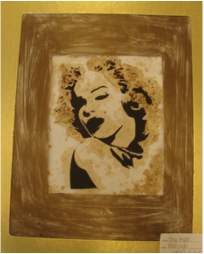 Marilyn stencil tinted with coffee and coffee grounds. Marilyn stencil tinted with coffee and coffee grounds. I pay close attention to what my kids work on in class but I always wonder what they actually take away from our lessons. One of the many things I love about the reflective blog posts I have students complete at the end of each unit is the window into their thinking that opens when I grade. I don't always see exactly what I planned on them learning reflected in their writing - sometimes I get more that I hoped for, sometimes less. For our Artists Solve Problems unit that ended on Friday I wanted them to shift their thinking about problems and begin to view them as learning opportunities. I was pleased to see that many students "got" this concept. I was surprised to see that many kids wrote about seeing professional artists as people who make no mistakes. Read on to see what they learned, in their own words. Manili, Art 1 "During this unit, my perspective on limitations have really changed. I used to think that limitations were something that held you back, and that your quality of work would be reduced knowing you had a setback. However, after going through this unit i realized that the limitations helped us in coming up with ideas. I found when we were brainstorming how to get around the limitation, my group came up with so many creative ideas that would have never even crossed our minds without the limitation in place; it promoted creative thinking and inspired us to try something new. " 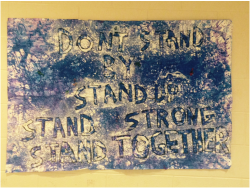 Eduardo, Art 1- "Throughout the unit my thinking about solving problems as an artist changed, mainly because at the beginning of the unit I had a different perspective, I thought that artists were so talented that they were accurate when they do art and they could just make a perfect piece without really having any problems , but in this unit I actually experience what is it like to have challenges and limitations when doing art, and I learned that every artist at some point along their path will have challenges, limitations, and difficult decisions that could either affect their work in a positive or negative way." Kearstyn, Art 2 - "I filled up the balloons and started throwing them. I realized that the paint was too light, this means I didn't add enough paint to the water mixture. I fixed this by adding more paint. It worked out but I had a major problem after that... The rubber cement did not work and it was impossible to see the words or people. This was the point where I had to change my idea completely and go back to the drawing board. I ended up throwing dark blue and purple paint balloons on the paper making it look like tie dye. When that dried I took masking tape and spelled out the quote in big letters. I was going to keep the tape but I wanted to splatter white around it, to add on to the texture. When I took the tape off though the letters were really hard to see. Since I still couldn't use paint brushes, I used a credit card to outline the letters in black. After climbing over all those difficult hills, I am proud of what I accomplished with this artwork and I am proud of getting the message out there to people about bullying. This unit has taught me a lot about patience and overcoming problems." Ashley, Art 1 - "Throughout the artists solve unit I learned how to better solve problems or encounter tasks that I am frustrated with. I started off by scrapping what I would be working on, and starting over from scratch, but then I realised I was wasting a lot of art, and that there was more to be done to it or to "fix" it. I often discovered how using different materials could improve to look or quality, and that all it might take is a line, and the entire picture has a fresh, bold, or new meaning. The limitation I chose for the final project was working only in materials that could not be erased, such as pen or sharpie. I did a bit of work in the area of pointillism, which is creating a picture out of small dots, but also stippling, which is shading a picture with the use of dots. they are very similar, but not the same. I started of with something very generic, a flower, but as each day went by, I decided to work more with eyes, as they are more complex and the shading in them can be ridiculous at times. I, in time, moved to anime eyes, because each one is unique and no other can look the same. but also, the way you shade them is more unique than any other style of eye. The reason I chose things that couldn't be erased as my limitation was because that meant that I then had no choice but to role with what happened. If I were to sneeze, and scratch a blue line through my purple eye, I would have to work around it. It caused me to appreciate what I could to with my art work without constantly erasing every "mistake" that I made. It has given my a good lesson on how to better solve problems, than pretend there was never a problem in the first place." |
Mrs. PurteeI'm interested in creating a student student centered space for my high school students through choice and abundant opportunity for self expression. I'm also a writer for SchoolArts co-author of The Open Art Room. Archives
December 2019
Categories
All
|



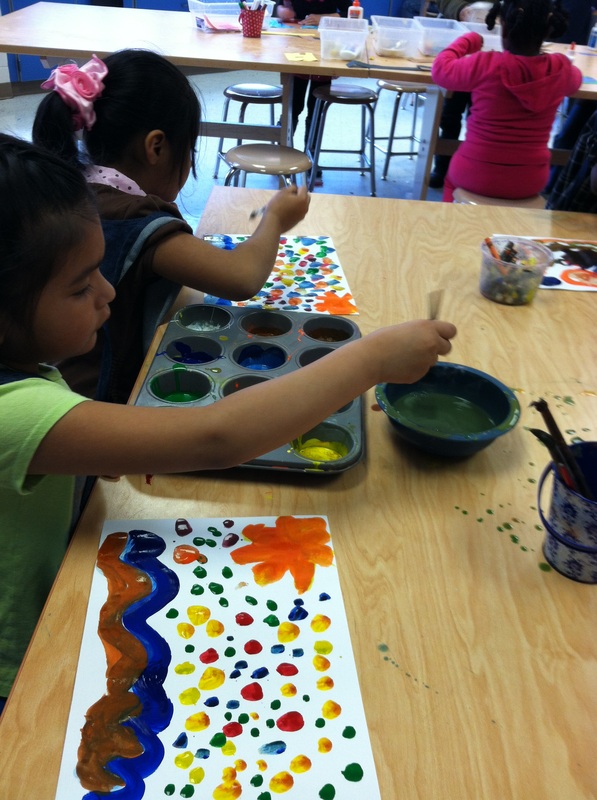
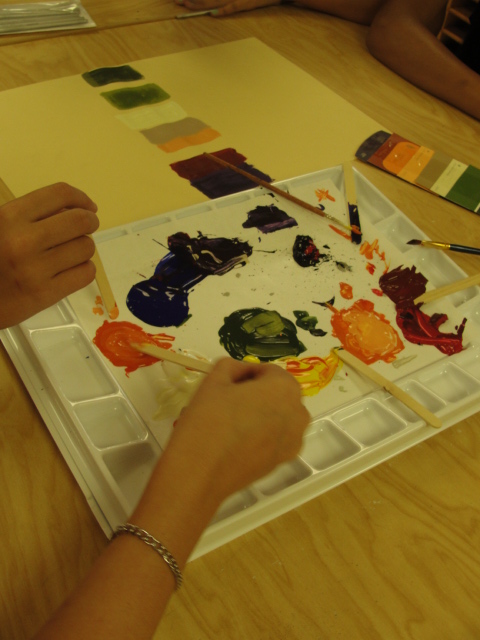


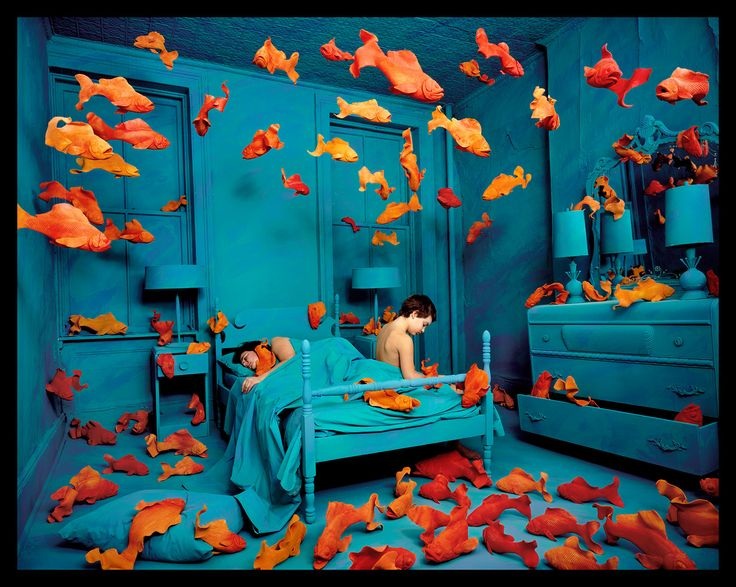


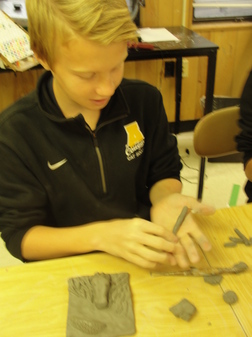

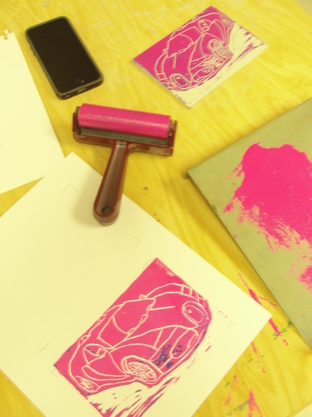
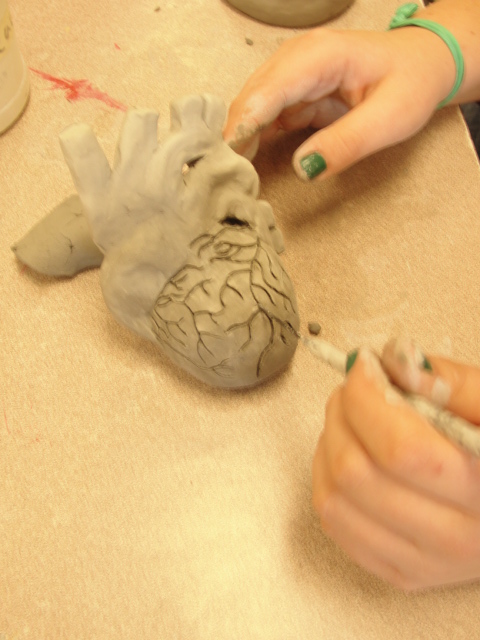

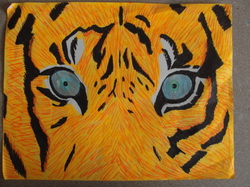


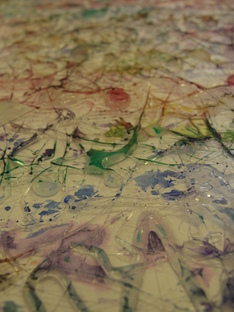
 RSS Feed
RSS Feed
